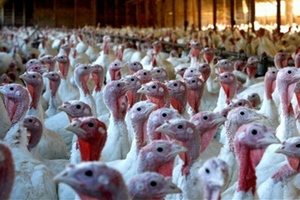US ethanol policy increases consumer food costs

A new study demonstrates the dramatic change in US food affordability trends since the Renewable Fuel Standard (RFS) came into being in 2005. Dr Thomas Elam, president of FarmEcon, the study’s author, shows that compared to long term trends, in 2012 the average family of four saw about a $2,000 increase in food costs, meaning that for the first time since the 1970s, food is becoming less affordable.
For the country’s food spending, the current dollar above-trend 2012 food bill was $162 billion. In perspective, Elam notes, the increase in food spending is about the same as annual consumer spending on vehicle repairs, college education or telecommunications. Given the outlook for sustained high major crop prices through mid-2013, we are likely to see another very large 2013 food bill increase, Elam predicts in the study.
A major component of the current decline in food affordability is, like the 1970s, booming grain and soybean prices. Unlike the 1970s, it is not exports this time around; grain and soybean exports are actually declining. Rather, the primary cause is booming use of corn in fuel ethanol production in the face of declining corn production.
The RFS requires 13.8 billion gallons of corn-based ethanol to be blended into gasoline in 2013, an amount that will use more than 40% of the nation’s corn crop, according to the US Department of Agriculture.
Elam notes that corn is just one of many basic farm inputs used to produce the US food supply. However, with increases in biofuel demand and declining corn production, corn prices have increased sharply. In turn, prices of other major crops have also gone up significantly. This ranges from major field crops like soybeans and wheat, to horticultural crops such as potatoes, strawberries and processing vegetable crops. Higher prices for other crops were necessary in order for those crops to compete with corn for land.
With a very long and involved chain of production and supply of all the items that use these major crops, however, increases in their prices do not immediately show up at the supermarket or restaurant. But Elam argues with the sustained price increases since 2005, we are now seeing major impacts on food production costs, retail food prices and restaurant menu prices.
Why is this increase in food spending important? Because since 2005 consumers have diverted increasing amounts of income to food, leaving less for more discretionary items, according to Elam. That spending diversion has contributed to the slow rate of improvement in unemployment, job creation, and thus total US income. In short, increased food costs have decreased discretionary spending, robbing other sectors of sales needed to increase production and jobs. Elam also points out that as ethanol production has saturated the minimum E10 blend level, ethanol exports increased. Ethanol is simply priced so high that motorists have almost totally rejected the higher E85 blend.
Elam concludes by saying that other than major increases in corn production, which is highly unlikely, the only other possibility for food affordability relief is to revisit the RFS, and lower ethanol production incentives.
“Absent reform, the increasing RFS will continue to pull more and more agricultural commodity tonnage out of the food sector, further driving up food costs, and cause further reductions in food affordability,” Elam concluded. “Food affordability will continue to decline, even if there is no domestic market for additional ethanol production.”












